Organisational Change: The Complete Guide
"Change is the only constant in life." Heraclitus, Greek philosopher.
Recently, we surveyed over 200 Kiwi businesses with 40% of them indicating they were likely to go through a transformation or change project in the next year.
Having knowledge of the change and transformation process, its impact on our people and how to effectively prepare and lead them through change is crucial. “Change is hard. People naturally resist change, especially if it’s imposed on them.” Jim Henderling, change and transformation expert and author.

Just as important as the “business side” of change and transformation is your ability to identify and communicate a powerful ‘why’, which becomes the motivation and inspiration to drive the change and transformation.
Change and transformation might feel daunting so we’ve created this guide to equip you in making change and transformation more empowering and less exhausting, the ‘phone a friend’ edition, if you will.
In this guide we’ll look at:

Chapter 1
The Basics of Change
and Transformation
Let’s start with the ‘Why’.
When you’re dealing with something as complex as organisational change or transformation it’s always good to understand why it’s happening.
When you’re trying to convince adults to do anything, there has to be a purpose.
We’ll also look at the subtle but impactful differences between organisational change and organisational transformation. Understanding the difference between the two will help ensure you’re taking the right approach.
And, what would an in-depth guide to organisational change be without covering the four main principles of change?
- Management and leadership
- Head and Heart
- Have to and Want to
- Select Few and Diverse Many
Why do organisations change?
2020.
Chances are that this short sentence will bring up many memories and emotions, good and bad.
A year of seemingly endless change.
Ready or not, we had to adapt to keep up with what was happening across the globe.

Some organisations needed to change the way they communicate and where their kaimahi work.
Other organisations had to overhaul their entire way of working, otherwise they would cease to exist.
Restaurants were one of the industries greatly affected by these external circumstances. There was an urgent need for them to change and transform. One such business was fast-food restaurant Chipotle.
In 2018 Chipotle adapted their counter service to something viable, with the introduction of the first ‘Chipotlane’.
This drive-through service aimed to provide customers with the same great Mexican food, in the comfort of their own car.

Customers can choose their preferred pickup option when ordering through the Chipotle app.
When 2020 hit, “Chipotle successfully navigated the first quarter with digital sales growing more than 80% year over year” (Chipotle Continues Accelerated Growth with the 100th Chipotlane and 10,000 new jobs).
They not only managed to stay afloat, but to grow and expand, by adapting their service delivery to accommodate the government’s stay-at-home directive.

According to research conducted by Walkme, only 34% of change initiatives succeed.
Here’s what 2020 taught us:
The world is ever-changing and change happens fast. So, organisations need to be able to adapt to internal and external change drivers, which may be:
- global – like a global pandemic :/
- national – like political uncertainty or recession
- regional – like cultural perspectives or natural disasters
- organisational – like new systems, technology or a new way of doing things.
Being able to adapt in an agile manner should be an integral part of business as usual.
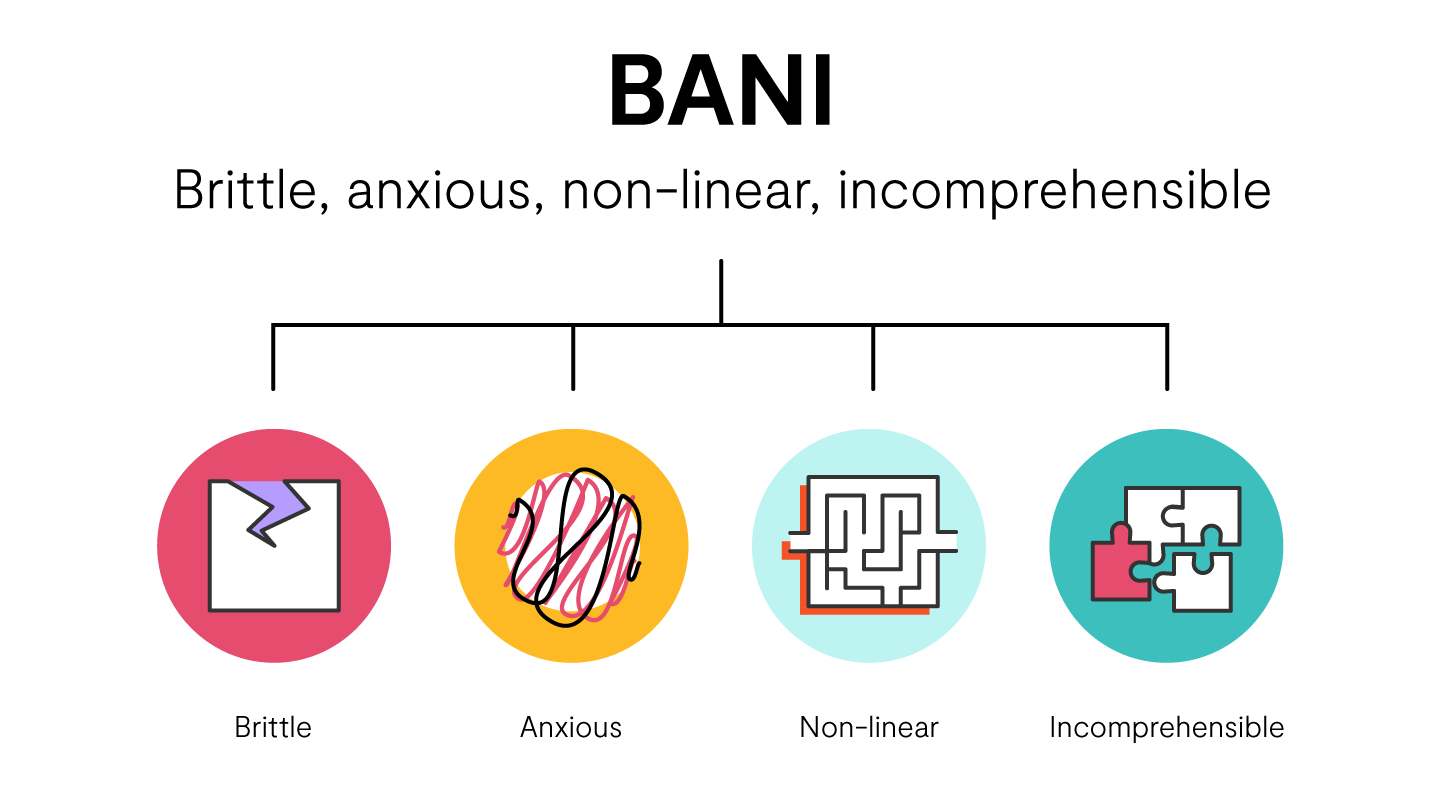
Author and anthropologist Jamais Cascio reflected on the rapidly changing post-Covid world and created the acronym BANI, to align more with our new reality. A reality that is Brittle, Anxious, Non-linear and Incomprehensible. We’ve taken a look at the skills needed by kaimahi to be able to navigate this new reality.
READ: Mastering BANI - Transforming the way we approach learning design
Change is an important aspect of our modern-day world, but what exactly is organisational change and is it the same as organisational transformation?
Organisational Change vs Transformation
The Merriam-Webster dictionary’s definition of change includes: ‘to make different in some particular (Alter)’ or ‘to make radically different (transform)’. Some believe that change usually involves a small part of the organisation and transformation involves a complete overhaul of the organisation, to enhance both operational and financial performance.
It may be that we don’t focus on whether something is a change or a transformation, but apply the same principles in both circumstances and realise the impact both may have on our kaimahi and customers.
The Four Core Principles of Change
Dr John Kotter, professor, speaker and author of Leading Change, created an award-winning methodology, that involves four core change principles, as part of the approach he believes produces lasting change:

1. Management and Leadership
It’s important to distinguish between these two terms. They’re both crucial but each brings something different to the organisational change and transformation process.
The organisations that succeed in the transformation process, apply both change management and change leadership strategies.
DOWNLOAD: Preparing Managers and Leaders for Change [Worksheet]
- Management involves:
- creating a set of clear processes to produce trustworthy, efficient and predictable results
- enabling kamahi to perform their daily tasks effortlessly
- encouraging kaimahi to buy-into change and work autonomously towards the set tasks.
- Leadership involves
- inspiring people and being able to speak with conviction to inspire action
- sketching a clear vision of the future
- effectively communicating ‘the why’
- motivating kaimahi to believe in the change or transformation including listening and being empathetic
- creating a desire and willingness to be a part of it.
“By combining the stability and predictability anchored by management with the speed and innovation inspired by leadership, organisations can move faster and with more reliability.” Dr. John Kotter
2. Head and Heart
This core principle sets out to answer the question: ‘What’s in it for me?’
Data and analytics may increase the heart rate and call to action for some. For most people, though, it needs to appeal to their emotions and speak to the inherent human nature of wanting to be a part of a bigger goal.
Our kaimahi are people. Organisational change involves:
- considering the basics of human nature
- thinking about what motivates and inspires people
- considering what may cause feelings of fear, stress, anxiety and uncertainty.
That’s where the role of Change Leaders is crucial.
But why?
We all know the benefits of a healthy lifestyle. Yet, the motivation and desire to exercise and stop a Netflix series to go to bed early, is difficult for most. Getting others motivated to work towards a common goal with better outcomes, can be just as hard.
Kotter spent decades researching how people are motivated to change and came to the conclusion that it can be done successfully by answering one question:
‘Why?’
The importance of this question is frequently overlooked in the organisational change process, with the focus being ‘What is changing?’ and ‘How will it happen?'.
Kotter believes that “every team member is different. Success demands using slightly different messages to best engage the diverse people on your team.”
In summary, help your people to:
- understand why the change is necessary
- understand why change should take place now
- visualise how they can benefit from this successful change
- understand what will be different.
DOWNLOAD: Speaking to Hearts and Minds [Worksheet]
If the ‘why’ of your organisational change is communicated strongly and effectively, kaimahi might be inspired to step forward and take action, as they’ll be invested in the bigger goal.
Insurance providers, AIA, have a ‘why’ that is focused transforming the way life insurance is perceived. As part of this mission, they launched AIA Vitality, a program aimed at improving health and wellbeing.
AIA gave their people free access to experience this program for themselves and, within three weeks of the launch, 80% of them were actively engaged.
Not only did it link strongly to their ‘why’ and provide the kaimahi with the know-how of this new programme by learning as they went; it also inspired and motivated them to become change agents for the program.
Another organisation that operates with a very strong ‘why’ is Lego. Their mission statement is to ‘Inspire and develop the builders of tomorrow’. Everything else they develop is aligned to that mission.
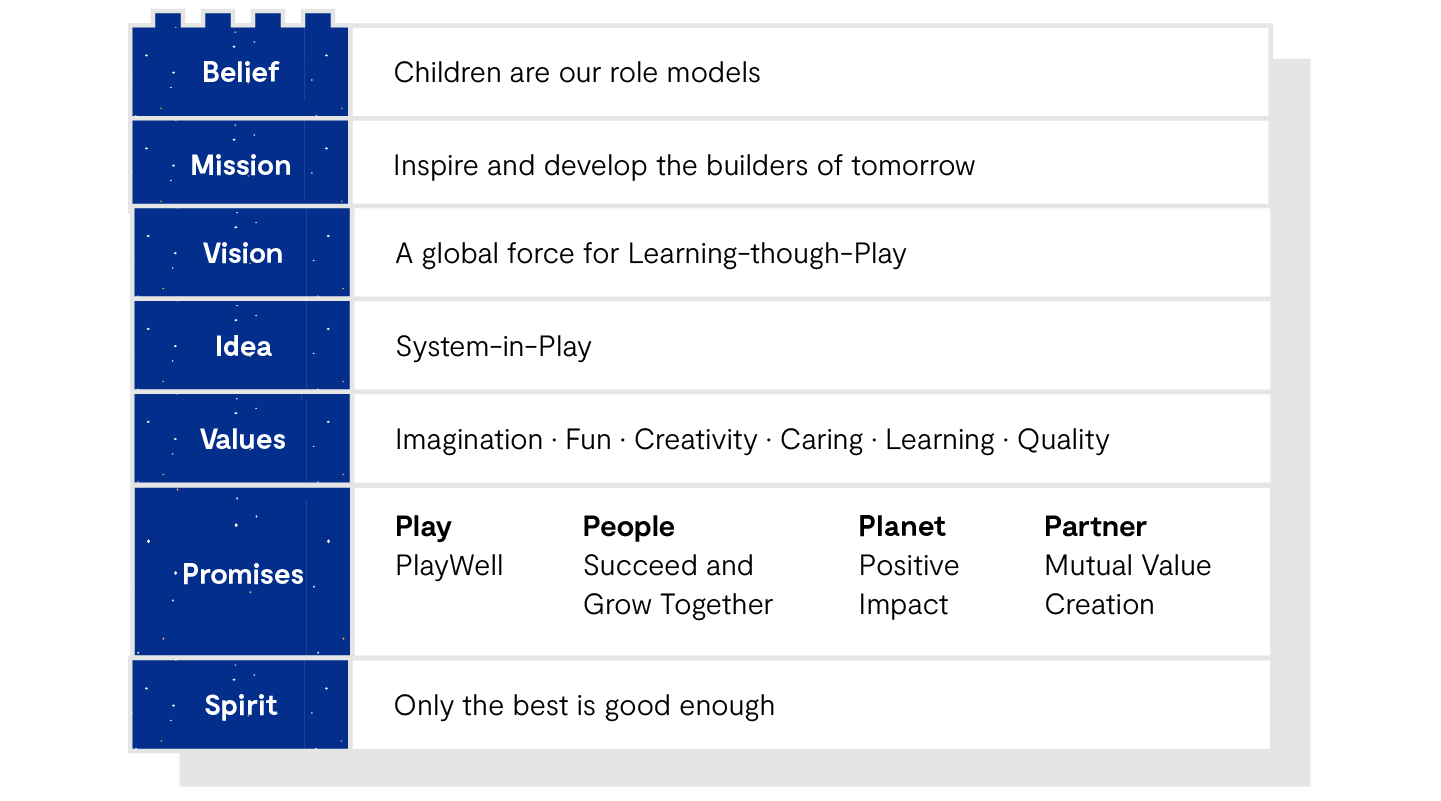
Imagine what a difference it makes, when there needs to be change and transformation and when asked why it’s necessary, it can be tied back to inspiring and developing the builders of tomorrow.
That’s powerful!
3. ‘Have to’ and ‘Want to’
For most of us, being told we ‘have to’ do something, evokes a strong reaction and resistance. If a manager tells you that you have to be a part of this change and transformation, because it’s your job, you might initially agree to do it. The moment there are any barriers or obstacles, feelings of ‘see, I knew this wasn’t a good idea and wouldn’t work’ might pop up.
Just think about how many people volunteer to be firefighters and paramedics or offer their time and resources to raise funds and awareness for worthy causes.
Feeling that you can play a role in something that can make a difference is powerful!
Kotter’s tips for creating a ‘want to’ mindset with kaimahi:
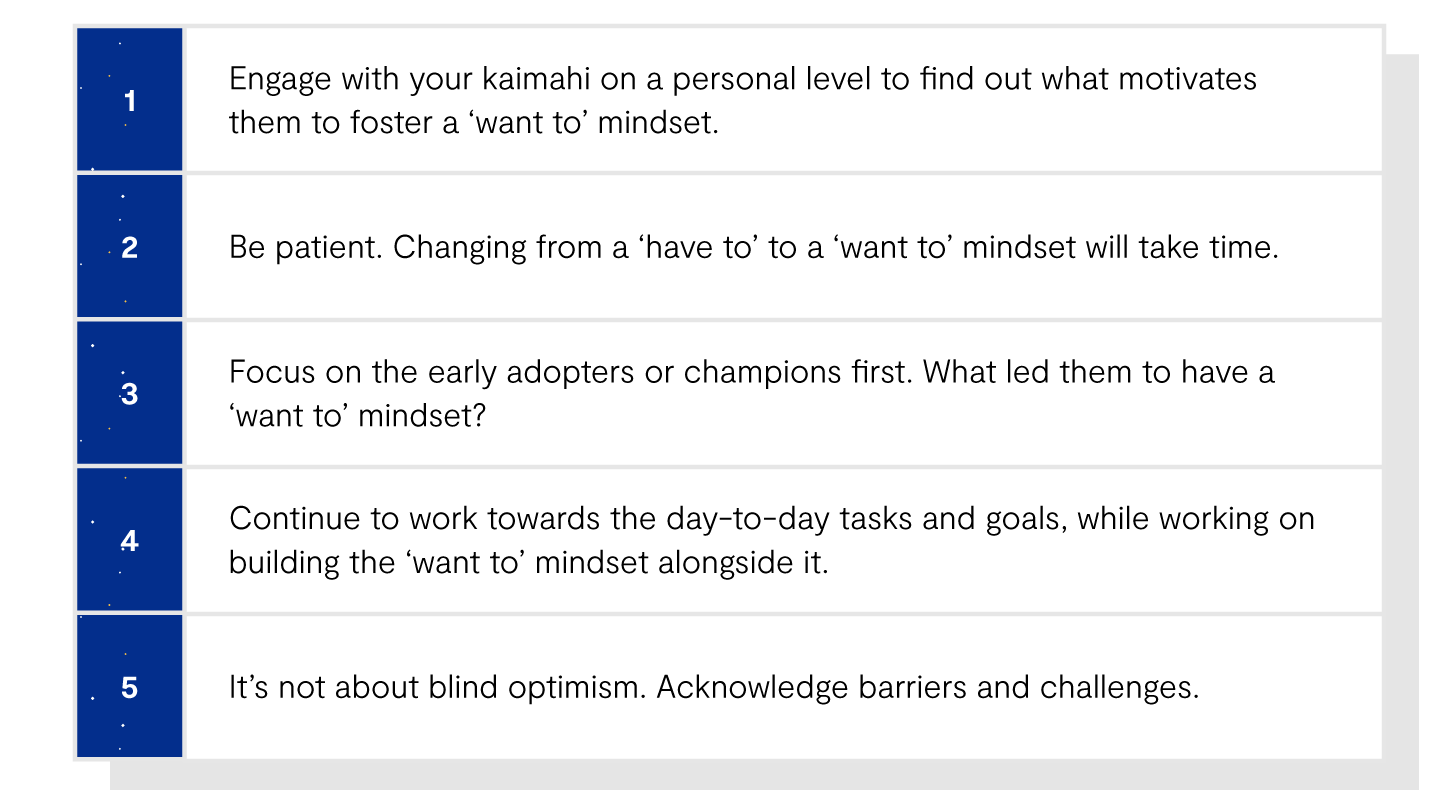
4. Select Few and Diverse Many
It’s very easy to have a few go-to people that you know will get the job done.
It’s those dependable and trustworthy individuals within the organisation. With organisational change and transformation...
It takes a village!
Relying on a specific and small group of experts or ‘select few’ leads to a very narrow approach to organisational change and won’t be able to account for how large-scale transformation will affect the entire organisation.
The impact will be clearly seen in the ‘go-live phase.’
DOWNLOAD: Engaging the 'Select Few' and the 'Diverse Many [Worksheet]
Kaimahi might see this as a top-down change they ‘have to’ apply to their day-to-day. Something that they had no input in or control over and that they’re not invested in.
For organisational change and transformation to be successful, a shift has to be made from the ‘select few’ to include the perspectives of the ‘diverse many’. More of the kaimahi need to be involved at every stage of the change process.
In Te Ao Māori there's a whakatauki which reads:
Nāu te rourou, nāku te rourou, ka ora ai te iwi.
With your food basket and my food basket the people will thrive
This whakatauki talks to community, to collaboration and a strengths-based approach. It acknowledges that everybody has something to offer, a piece of the puzzle, and by working together we can all flourish.
This doesn’t discredit the ‘select few’.
There are various ways in which the ‘select few’ can be instrumental in various roles throughout the process, for example subject matter experts (SMEs), such as developers or acting as Change Agents or Champions.
Chapter 2
Are You Ready
For Change?
Being able to respond successfully to change, will set you apart from other organisations.
Many organisations have a willingness to change, but only a few succeed. According to a survey conducted by WalkMe, one third of CEO's admit they've failed to achieve desired outcomes in previous change attempts.

In some instances, old processes and barriers are not identified and removed, leading to logistical nightmares.
Transformation expert, Martin Danoesastro mentioned in his TedTalk, that “Change is not only about embracing the new, it’s also about giving up some of the old as well.”
He then proceeds to ask the question: “What are you willing to give up to change the way we work?”
Not quite the warm fuzzies you might have hoped for, but rest assured, being ready for a change initiative has many benefits and makes the journey easier for those involved. To find out if you are ready for change, conduct a change readiness assessment.
A change readiness assessment evaluates an organisation's ability to successfully carry out a proposed change. This includes assessing the organisation's capacity, resources, and culture to handle the transformation.
We’ll get to the how-to in a moment, but first, let’s consider the benefits of a change readiness assessment.
What are the Benefits of a Change Readiness Assessment?
They say, a change is as good as a holiday.
But are you ready for change?
A change readiness assessment will help you determine your business's readiness to roll out and accept the change, while also looking at the big picture of initiation, follow-through and maintaining the change and transformation.
By doing a change readiness assessment you are determining whether the:
- conditions are ideal for this change and transformation. “These include any existing legislation, policies or procedures that might inhibit change.” (Indeed Career Guide)
- organisation has the necessary resources and capacity. This includes technical and human resources, as well as time and financial capacity
- motivation, attitudes and culture are suitable for this change and transformation to be successful.
Factors That Can Derail Change
There is a wide range of factors that can halter change, especially as it concerns people and the culture of the organisation.
Here are three of the most common:
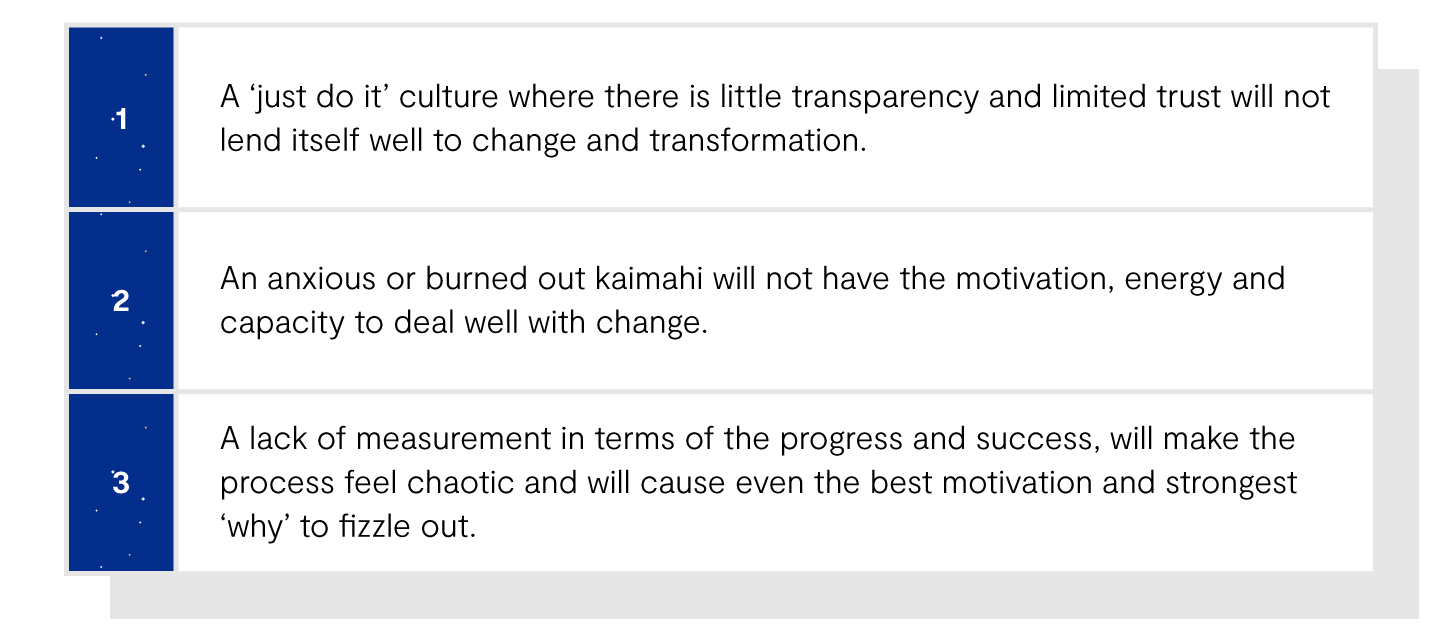
How to Conduct a Change Readiness Assessment (3 Simple Steps)
1. Fully define the change and its impacts
Be detailed in your description of this change and transformation.
This will be helpful for others who haven’t had insight into the thought processes that led to this change.
DOWNLOAD: Selling the Benefits of a Change Readiness Assessment [Worksheet]
2. Conduct the assessment
Decide on the tools you want to use: This will be unique for each organisation, depending on what communication methods are most effective with your team.
It may include a combination of tools to get a thorough understanding of the change readiness. Tools may include:
- kaimahi surveys
- polls
- 1:1 discussions
- team discussions
- data and analytics etc.
Explain the purpose of the change: Why it is important and what the potential benefits will be for the kaimahi?
This information will come from your reflections in the point above.
Use your tools to determine awareness: of the proposed change at every level of the organisation, to determine kaimahi’s willingness to participate in the change and what they feel they might require to be able to effectively and successfully participate in the change e.g. additional training, resources etc.
Also use it as an opportunity for kaimahi to ask questions, voice concerns and to provide transparent feedback.
Lastly, summarise and analyse the findings.
2. Improve change readiness
Use the analysed findings to compare the factors that can support and deter the change and transformation process.
- Consider what can be done to overcome the obstacles and improve engagement.
- How can the factors that support the change be used and amplified throughout the process?
- Maybe it’s a strong message around ‘The Why’ that can become a golden thread through the internal marketing.
“To sum up, the more data that is collected about an organisation’s readiness for change, the easier it will be to design a change plan that is suitable – and, as a result, change projects will be more successful.” WalkMe

Chapter 3
Creating a change
management plan
Okay, so you have decided your organisation needs some kind of change...
You’ve taken time to assess all the risk factors and you’ve conducted your change readiness assessment.
Now it’s time for the rubber to hit the road!
A change management plan is a detailed outline of the ‘what, why, how and who’ of change. It ensures everyone’s on the same page, disruption is kept to a minimum and efficiency is maximised.
Nulab lists these eight steps to creating a change management plan:
1. Define the Scope
Much like the first step in the Change readiness assessment, you’ll define the proposed change in detail. This time however, you’ll include objectives and key results.
John Doerr, engineer, investor and author of ‘Measure what matters’, breaks down objectives and key results as follows:
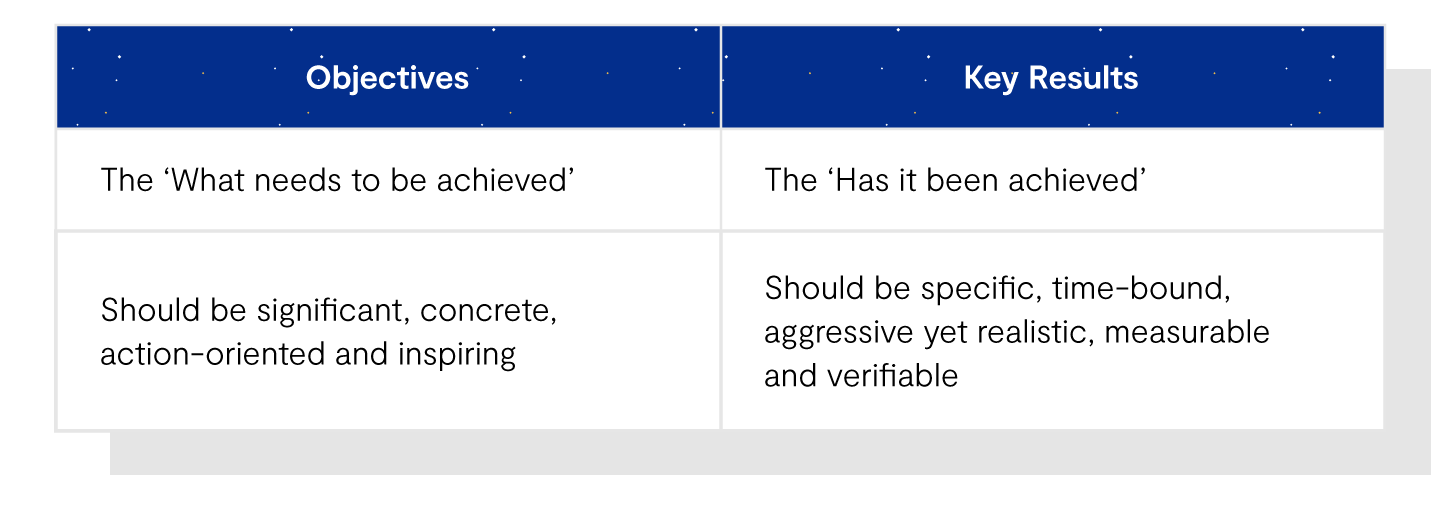
We’ve all heard of SMART objectives.
Objectives which are specific, measurable, attainable, realistic and time sensitive. For example: Grow sales revenue 15% by the end of the financial year.
These kinds of objectives are clear and to –the point, but they lack inspiration.
It’s hard to get buy-in without context.
The most important question you need to be able to answer is ‘why?’. Develop a clear and compelling sense of why. Your objectives will be shaped by your why.
I want to achieve ________, because ________.
To survive, a business must be able to change.
2. Identify the Stakeholders
It’s important to identify all stakeholders involved in each stage of the change and transformation process.
This stakeholder analysis will enable you to identify any possible gaps, where work needs to be outsourced or additional kaimahi/contractors appointed.
3. Assign Responsibility
As well as assigning responsibility, you need to make sure that each stakeholder is empowered to take on this responsibility, by having the tools and resources they need.
This step is crucial in empowering your team to take ownership and accountability within this process. It shares responsibility and also gives your team the opportunity to hone their leadership skills as they move towards their goals.
“Change cannot be led by leaders telling their people what to do, when to do it and how to do it. The role of leaders is to ensure that all teams are aligned with the common purpose/the why, then let go and trust their teams in making the right decisions on how to get there. Open and transparent communication is necessary.” Martin Danoesastro, Transformation expert
4. Develop a Timeline
Your timeline should show all your deliverables and project milestones.
This gives stakeholders a clear understanding of the expected time frames, provides opportunities to flag anything that might push out the timeline and celebrate the milestones as they get completed.
5. Allocate a Budget
A budget enables you to have the necessary tools and resources at every stage so you can implement each step.
A change management budget will be influenced by the level of change and transformation you want to achieve.
6. Determine to Measure Success
Measuring success doesn’t only include reaching the milestones throughout the project; it stretches far beyond that.
Before the change and transformation is rolled out, think what specifically you want to achieve.
Data and metrics can provide a good indication of how successful the change and transformation process has been, but it shouldn’t be limited to only that, otherwise the most important aspect or heart of the matter will be missing.
More on this in Chapter 9.

According to data from statista.com the average lifespan of
500 Index companies has shortened considerably in the last 75 years.
7. Document Everything
Inspire Group’s research of over 200 businesses in New Zealand found that 40% of organisations have indicated they’re likely to go through change within the next 12 months, and most of these businesses have indicated that they’ll require external support.

Make sure that the whole change and transformation process is documented in a clear and easily understandable way.
Where possible and appropriate, make use of visuals to convey information. If there are any handovers or outsourcing during the process, it should be seamless and easy to understand from the documentation provided.
8. Review and Update Regularly
Take the time to reflect and update the change management plan on a regular basis.
This will ensure it is current and accurate for various teams who are using this as their single source of the truth.

Chapter 4
Implement Your
Change Plan
“Transformation is a system of systems, all made up of the most complex system of all — people.” HBR, How People Analytics Can Help You Change Process, Culture, and Strategy
Implementation is where many organisations focus their time and energy… and also where it often goes horribly wrong.
In fact, according to McKinsey, 70% of change programs fail to achieve their goals, largely due to employee resistance and lack of management support. We also know that when people are truly invested in change it is 30% more likely to stick.

Sometimes it’s easy to forget you’re dealing with people.
If your kaimahi haven’t been properly prepared for change it’s likely that the process won’t be as smooth as you’re hoping.
Engaging your kaimahi through something like an internal marketing campaign helps people to feel involved in the process.
There are a number of different models you could use, but the easiest is ADKAR; Here we’re focused on boosting awareness of the change and desire for the change.
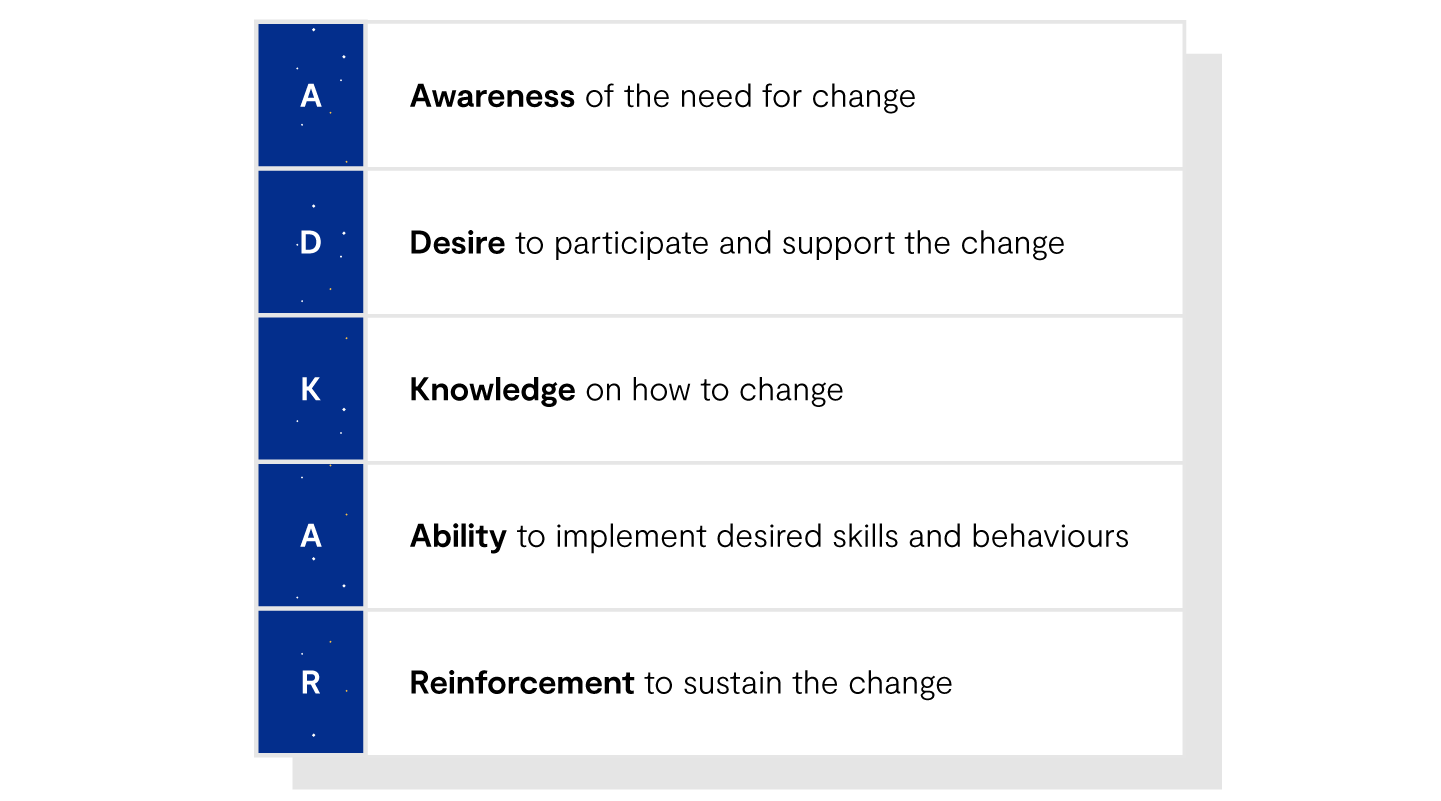
With everyone on board, it’s time to steer the ship during the implementation.
This is where you build on the knowledge and ability.
The implementation phase is where learning and development can be a fantastic ally.
To build on the knowledge of our kaimahi, a variety of resources should be created, such as workshops, eLearning, podcasts, QRGs etc.
It’s important to make sure the solution hits the mark for your learners.
Their engagement is important in achieving the Objectives and Key Results (OKRs), as set out by the business.
That’s why you should involve your end-users from the beginning, or co-design phase. Listen to what motivates and inspires them, what barriers they face and what they want to see in their learning. These conversations will shape your solution.
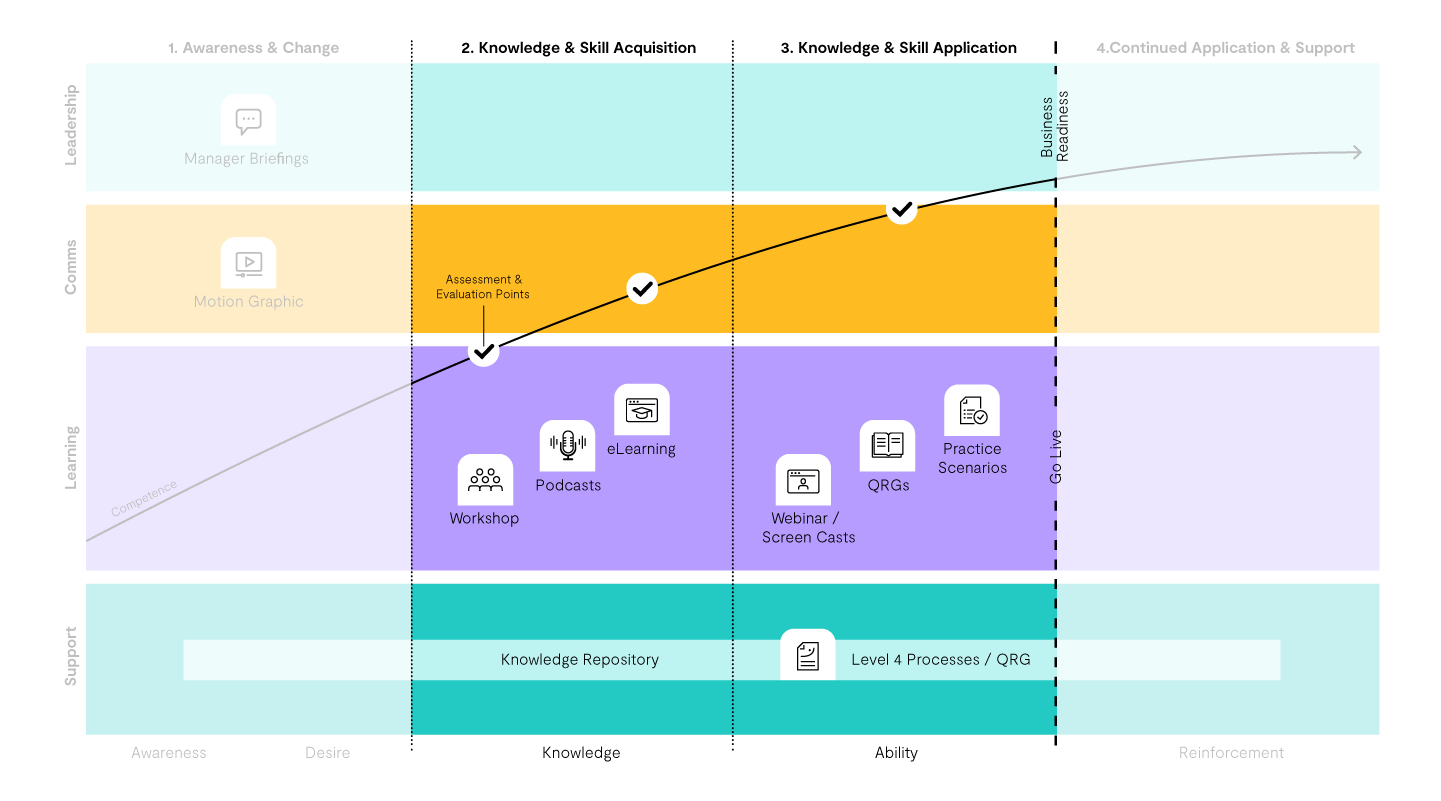
There will be continued application and support required for kaimahi, after the go-live date.
This could include refresher courses, development of any other deliverables to support areas of development still required, 1:1 check-ins with leaders/buddies, team conversations, peer-to-peer support etc.

The ‘Leap and Hops’ pattern of organisational change performance demonstrates well that there will be a big change (leap), followed by a series of smaller adjustments/changes (hops) that will occur over the change and transformation period.

Chapter 5
How to Communicate
Change
According to research conducted by Robert Half Management Resources, 65% of 300 senior managers surveyed agreed that communicating clearly and frequently was "...most important when leading your company through a major change..."
Communication is essential in any relationship.
It’s such a simple concept.
But when it’s neglected, you can definitely see the destructive impact it has.
Open and transparent communication is about more than just conveying and receiving information, it’s about building trust.

Being proactive about communicating the why, the what and the how of change and transformation, will contribute to building trust and getting your people inspired and motivated to join you on this new journey.
The process continues when you provide ample opportunity to listen to concerns, feedback and questions.
This may seem tricky in large organisations, where there are many moving parts, but without exception (and regardless of size), a clear communication strategy is invaluable.
A communications strategy details the messages, tone, language, methods etc. that will form part of the internal and external communication with all stakeholders.
This ensures greater consistency in what is being communicated and more importantly how it is being communicated.
Your leaders can be amazing at what they do in their day-to-day communication with their teams, but don’t assume they will be able to convey the change that is coming in an effective way.
After all there are many ways to say: Change is coming. It will all be okay.
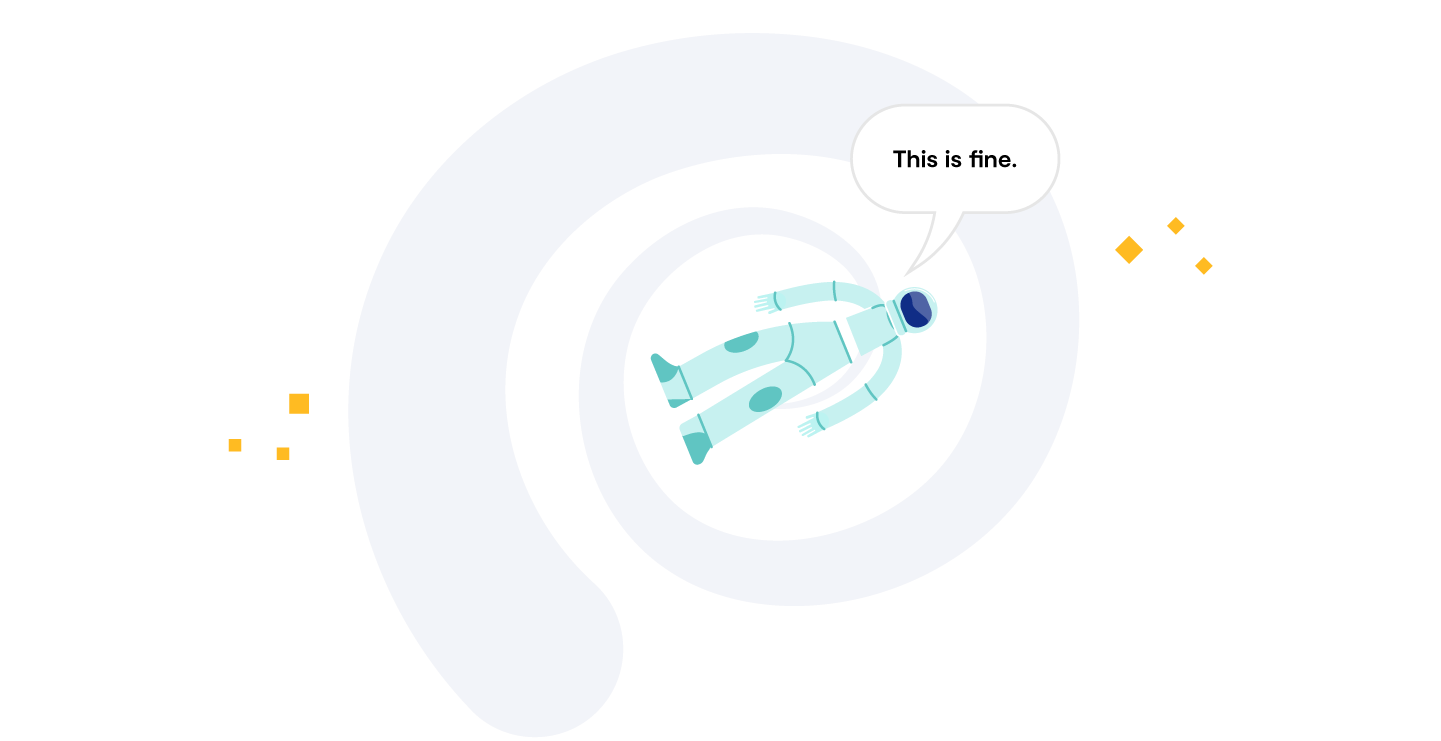
Let’s explore a few tips on communication before and during organisational change and transformation.
Before: How to Tell Your Team That Change is Coming
Planning is key.
Spend time thinking about what you want to convey, how you want it to be delivered and what follow-up opportunities will be provided. It needs to be one authentic voice.
If there’s a thorough understanding of the why, a person will be able to authentically convey the need for and benefits of change and transformation.
If not, there’s a big chance that it’ll come across as scripted (read: a process of enforcement rather than one of collaboration).
Your leaders people skills of will be tested throughout the process.
So, make sure that all levels of leadership and management first understand the context around the change and second, are able to convey it in a way that demonstrates authenticity and responsibility… not just authority.
Kaimahi will look to their leaders to see if they too are supportive of the change and transformation and to answer any queries that will spring from uncertainty about what’s to come.
However you decide to communicate the change, follow these three rules:
- Be transparent and clear about what the organisational pain is that you are trying to alleviate and how the solution will benefit the organisation and its kaimahi. Always link clearly to the why.
- Focus on the outcomes you are aiming the achieve, instead of the specific tasks you need kaimahi to do. This can provide space for teams to come up with their own approach around how they want to achieve those outcomes, and encourages participation.
- Give your kaimahi opportunities to process the information, ask questions or provide feedback in a safe space where they will feel comfortable.
During: Communicating Clearly During Change
It’s important to continually communicate throughout the change management process.
A cursory email or team meeting won’t be enough.
Think about the key messages you need to get across at different milestones in your project.
Sean Conner spoke about how the marketing strategy of saying something seven times, can also be applied elsewhere, in his blog ‘Say it 7 Times: The Art of Overcommunication’:
“You must ‘say it seven times’ before a message sticks.
Information expands our context.
Hearing it for the first time, we become aware of it.
As we hear it again, we begin to think critically about it.
And through thinking about it, we gain the ability to act on it, to internalise the information as part of our context that we can then use to guide our actions and behaviours.
Repetition of the message helps move us through these phases. Saying it seven times doesn’t mean you have to just verbally say it over and over. You can reinforce the message through multiple mediums.”
“You must ‘say it seven times’ before a message sticks." Sean Conner
Regular check-ins and new internal resources shared through the process can help with this. Receiving feedback can help you to identify areas of further development and need, e.g. whether any additional tools or training are needed by kaimahi.
Create opportunities to give feedback to the team on how you’re tracking.
It’s encouraging for people to see progress and will help to maintain the motivation and energy levels. Don’t forget to celebrate the progress.
 Chapter 6
Chapter 6
Speaking to Hearts
and Minds
It’s no surprise that the fear of change is right up there with the fear of death, spiders and rejection.
As with any of these fears, it elicits a strong emotional response programmed as part of our genetics to maximise our chances of survival.
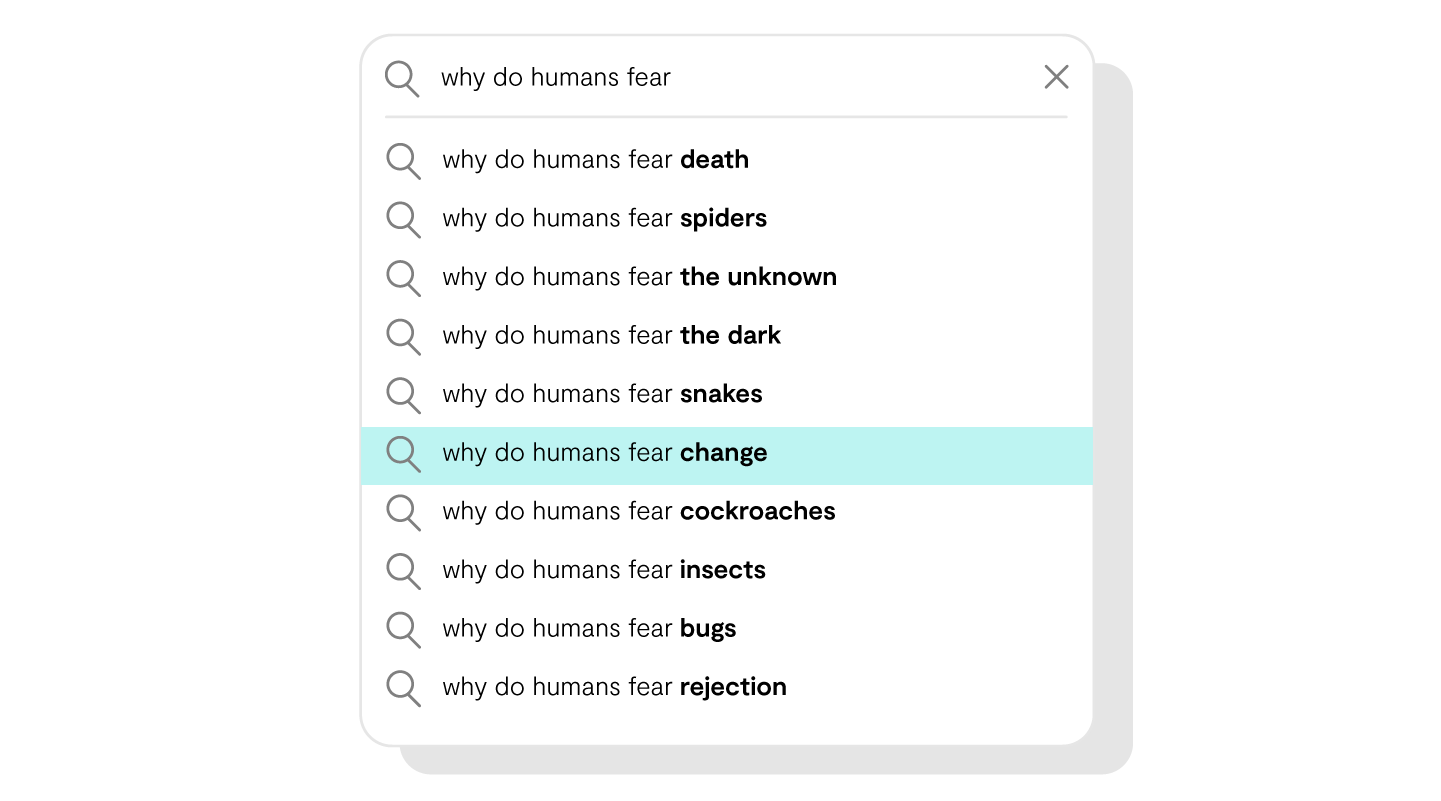
To understand why change can be such a challenge, let’s take a closer look at the human biology that impacts how we respond to change.
Human biology and change
The need to survive
Humans are naturally wired to resist uncertainty.
The nature of change means it naturally holds a degree of uncertainty, even if it has been planned to a tee. According to Psychology Today, our brain has a hunger for certainty.
When we experience uncertainty, our limbic system is alerted, causing us to worry and to speculate, to create some sense of certainty.

Another reason for this type of response to change is that it’s tough for humans to let go of the old and to embrace the new, even if it’s a much shinier future that awaits us.
Kotter describes this reaction to the unknown as a mechanism he calls our ‘survive channel’:
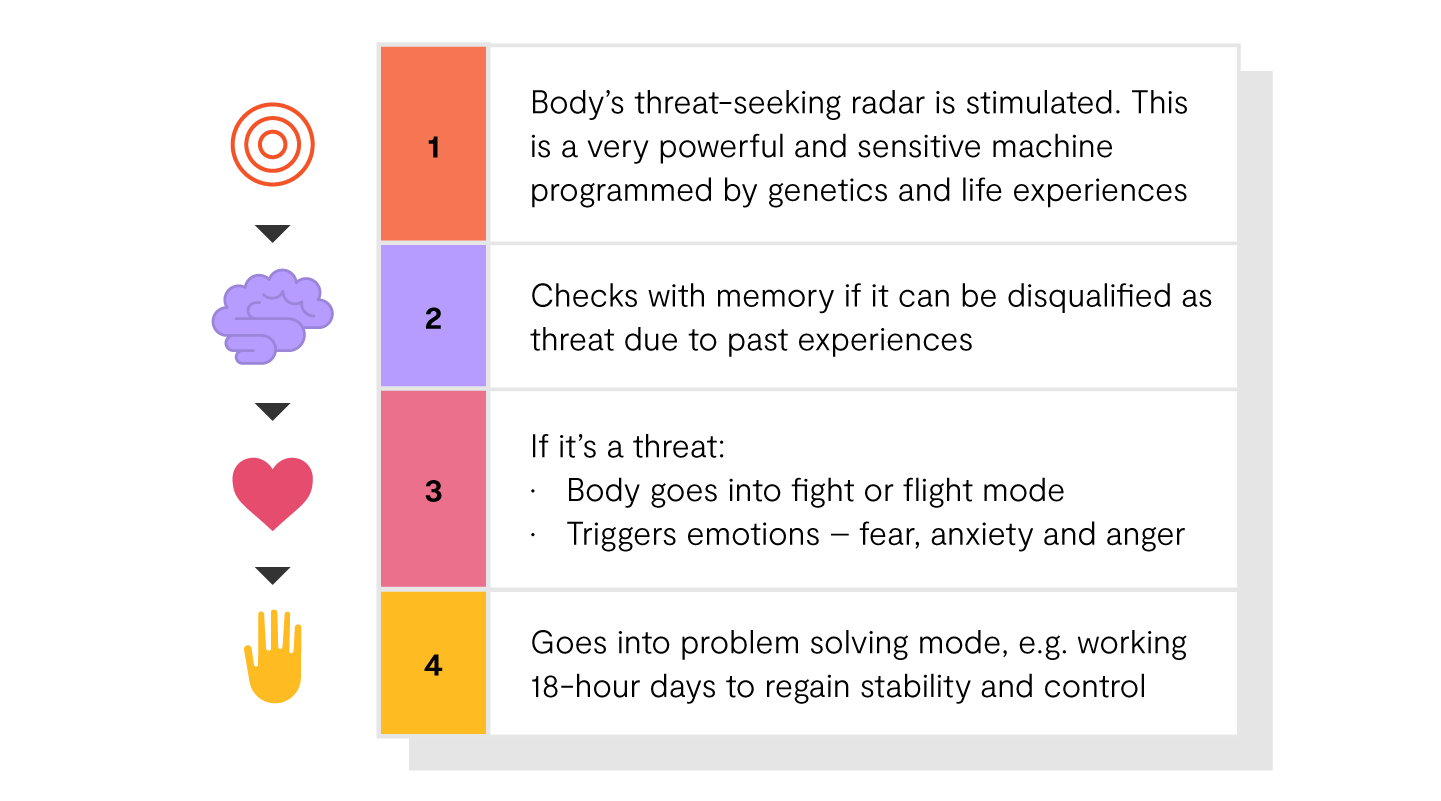
The ability to thrive
The other side of the coin is that the human brain has a great ability to adapt to change and can be trained to thrive in uncertainty.
Kotter explains that humans have a desire for innovation and seeking opportunities. He calls this mechanism the ‘thrive channel’:
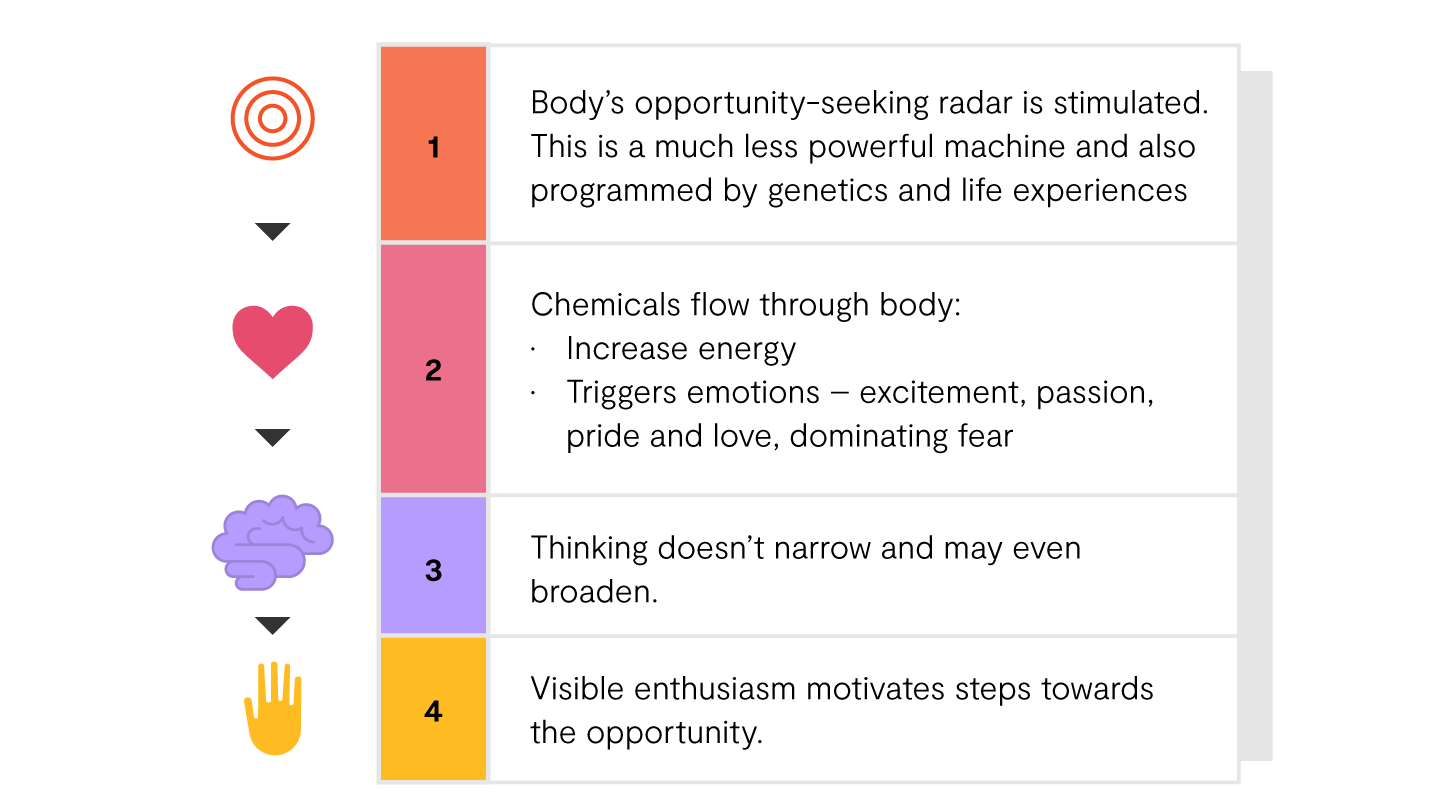
Challenges to the hearts and minds
Change and transformation triggers our innate human nature in so many ways.
There are a few challenges linked to this that you can expect to encounter along the way. We’ve taken a look at three of the challenges to hearts and minds when it comes to change.
Loss-aversion
Imagine this:
You have been given $100 to spend in an auction. You are presented with a mystery item, that’s covered up. The value of the item could be immense, or it may be worth nothing. You know there is an item you’ve wanted for some time, that will be coming up later in the auction.
Do you take the chance of the mystery item or save the $100 for the known item?
“For most people, the fear of losing $100 is more intense than the hope of gaining $150.” Daniel Kahneman, Nobel Prize-winning psychologist
In their research, renowned psychologists Daniel Kahneman and Abel Tversky concluded that ‘losses loom larger than gains’ and that most people have an aversion to loss.
Most people naturally have an aversion to things they consider high risk. This tendency strongly outweighs the thrill of winning - even when the odds are good!
For businesses, especially those that have been very stable and successful, this can present a big challenge. People in these environments will typically not be enthusiastic about change if they feel that the reward doesn’t greatly outweigh the risk.
Conformity
This might not seem like a challenge, especially if everyone is collectively working towards achieving the set milestones.
The challenge will come when there’s resistance or a general sense of loss-aversion. That’s when you need those who see this change and transformation as an opportunity, rather than a risk, and decide not to conform to the majority thinking, but to speak up and act.
The early adopters are crucial as they will start campaigning to get others on board.
Many conformity experiments have been conducted to show the impact the majority opinion has on individuals.
A popular example is the Asch line experiment.
In each round the participants are shown three lines of different lengths (A, B and C).
They’re then asked to match the length of line X, to either A, B or C. In the last round, all participants except one were asked to provide the same incorrect answer on purpose.
The goal of the experiment was to see if the sole participant would still give the correct answer, even if it was in conflict with everyone else, who provided the same incorrect answer.
After 12 trials, 75% of participants confirmed at least once during the trials while only 25% did not.
Change fatigue
Humans have a desire for stability and certainty. We can adapt and handle change, but when there are constant changes, we start to experience loss of ownership and control and confusion. When humans continue to experience these emotions, it leads to a condition called change fatigue, also known as change saturation.
“The amount of change employees can absorb without fatigue – negative reactions to change such as burnout, frustration, or apathy – has plummeted at a time when more change is precisely what organisations need in order to reset,” Jessica Knight, vice president in the Gartner HR practice.
Change fatigue can show itself in a variety of symptoms:
|
|
|
In this time when the ability to change has become a big part of business as usual, rather than one of events, organisations are placing emphasis on resilience.
While resilience is an incredibly useful skill to develop, kaimahi may start to experience an ‘all on me’ feeling, i.e. "my organisation expects me to be resilient enough to cope with the frequent changes and if I’m experiencing the symptoms listed above, that’s all on me".
The Harvard Business Review suggests four practices leaders can make use of to collectively combat change fatigue:
- Pause to acknowledge change, and the discomfort that comes with it.
- Adopt the mantra, “I am a person who is learning _______.”, rather than “I can’t do_________.” For example I’m a person who is learning how to incorporate Māori tikanga and Te Reo in my everyday language and practice.
- Make a plan from which you will deviate. A plan provides the comfort that we’ve thought about various possibilities, but shouldn’t be set in stone. This will start to contribute to a more flexible way of thinking.
- Invest in rituals as part of the day-to-day. This provides some form of certainty, e.g. we might experience many changes and disruptions, but we will break it down at our morning stand-up meeting or take a break at 10:30 for the morning quiz.
 Chapter 7
Chapter 7
Leading Through
Change
Change and transformation expert and author, Jim Hemerling, has dubbed this an era of ‘constant transformation’.
If an organisation is going to sail through the rough waters of change and transformation on a regular basis, how can leaders navigate them effectively and, perhaps more importantly, how might they derail the process?
How Leaders Get in The Way of Change
Leaders play a big role in whether change feels empowering or exhausting for your people.
Let’s look at how leaders can get in the way of organisational change.
 |
Waiting Too Long to Implement |
This frequently leads to full-on crisis mode, dealt with usually in one of two ways.
Firstly, the focus is placed on obtaining short-term results.
When there’s a strong focus on short-term goals the long-term vision of a hopeful future that links to the strong ‘why’ usually gets lost, as little time is spent thinking about and planning the bigger picture.
The second way in which a crisis mode is dealt with is taking a superficial one-off approach, with the expectation that it will return to business-as-usual straight after the crisis has subsided.
Again, this solution doesn’t bring about true change and transformation where the impacts will be seen for years to come.
Much like a crash course before an exam, these approaches may allow organisations to cope with the crisis in the moment, but are unlikely to empower our people to deal with change and transformation over the long term.
 |
Underestimating Scope and Overestimating Capacity |
Change is a lengthy process that’s likely to stretch over months. It’s not a quick fix.
Change also involves many players.
That’s why it’s important to have a team dedicated to your change project. This team of experts should include leaders, Comms, Learning and Development and Support.
Even though each of these players will be involved in various stages of the process, it’s important that they’re engaged and have an overview of the entire process.
Many first-time change leaders experience that it was much harder than they expected it to be. Leaders also expected their teams to be able to work on the change and transformation project on top of their usual day-to-day responsibilities.
“Transformational change starts with an honest acknowledgement of how hard the work will be, how much capacity and discipline the organisation actually has, and the personal commitments of sponsoring executives to change first. Further, communicating change effectively requires listening to the organisation twice as much as telling the organisation about the change.”
 |
Being Afraid to Share a Personal 'Why' |
For many leaders there’s a very personal ‘why’ behind the proposed change and transformation.
Added to that will sometimes be a promotion. Because of this many leaders choose not to disclose their personal why and to disconnect themselves from the process.
This is not usually to their advantage as your people are usually smart enough to see right through it.
When leaders are, however, passionate about the cause and conveying that passion and conviction honestly to their people, it can open the floor for other leaders and teams to share how their own personal why connects to this.
People respond to honesty and leaders that are invested and working hard alongside the rest of the organisation to achieve the set milestones.
How to Lead Through Change
So how do leaders truly lead through change? Jim Hemerling states that it’s putting people first.
He mentions five deliberate essentials organisations should focus on to do this:
1. Inspire Through Purpose
Head back to the Head and Hearts section to read more about this.
2. Go All-In
Oftentimes organisations disguise big reshuffling and layoffs under the term ‘transformation’. Yes, transformation will involve making changes and difficult decisions, but it’s more than that.
To go all in means to think about:
- initiatives that enable you to grow or that will lead to a win over the medium term
- actions to fundamentally change how the organisation operates
- investments to develop the leadership and the talent within the organisation.
3. Provide the Essentials for the Process and Beyond
Consider what capabilities your people will need to succeed during the process and beyond.
The continued application and support that’s needed is often neglected. This is a crucial part of the change process and speaks to the ‘Reinforcement’ section (to sustain the change) in the ADKAR model.
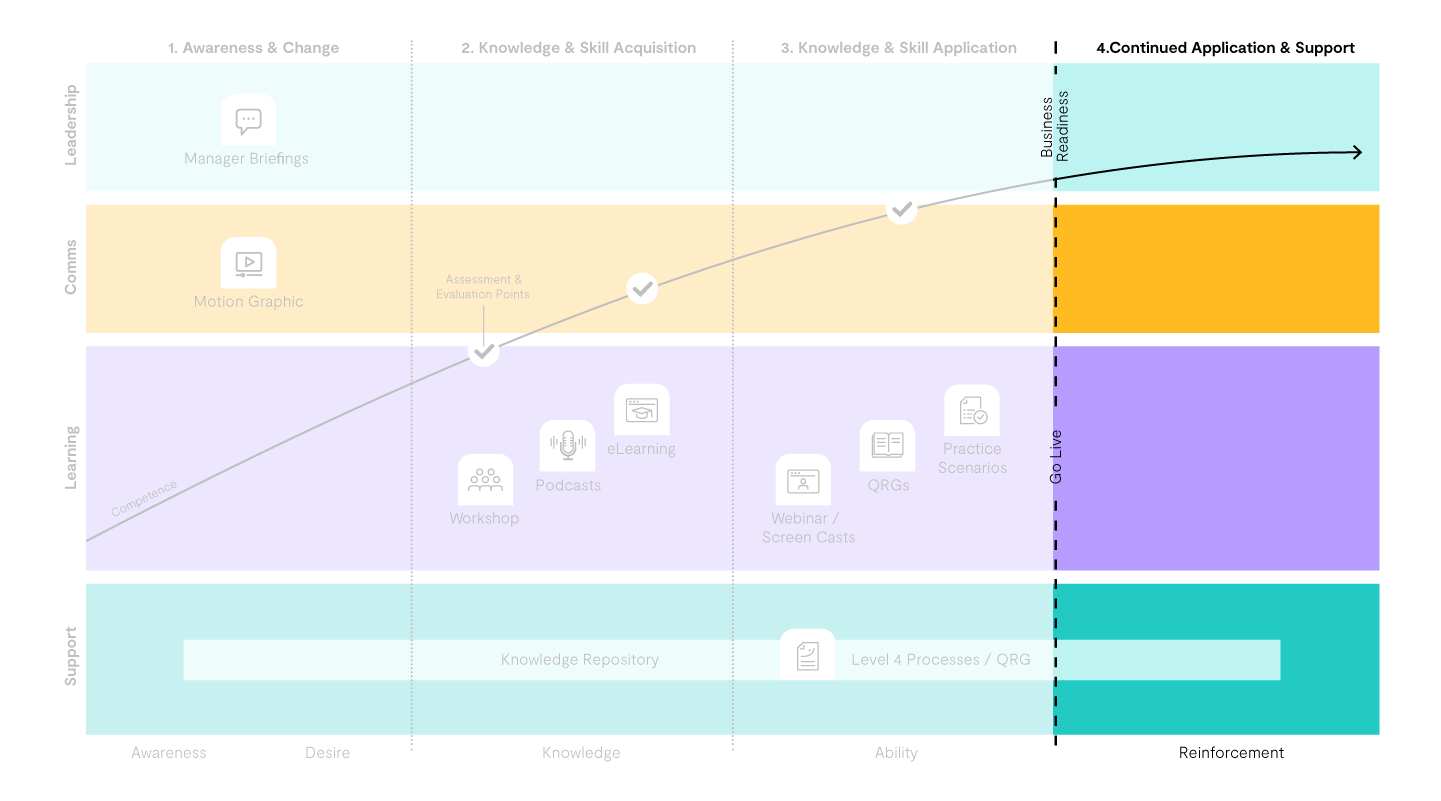
4. Instil a Culture of Continuous Learning
Learning shouldn’t be an isolated event.
It’s something that we’re naturally programmed to want to do.
Think about your inclination when watching a series or a movie based on true events. You can’t wait to pause and quickly Google how far removed it is from what actually happened...
Humans are curious.
READ: 5 Actionable ways to create a culture of learning in your organisation
5. Be Directive and Inclusive
Good leaders are directive and inclusive.
Being directive involves having a vision, a clear roadmap with milestones and communicating this effectively to your people. This lets teams know what is expected of them and experience a sense of safety, security and accountability through that.
Being inclusive involves speaking to the hearts and minds of their people.
Leaders do this by engaging with their people, asking about what they’re experiencing and seeing and encouraging open conversation and debate.
With inclusive leadership, people will feel comfortable sharing their ideas and suggestions and inclusive leaders will be open to accepting and implementing them, if they are of benefit to the change and transformation process.
6. Walk the talk
If kaimahi aren’t seeing leadership walk the talk themselves the best comms in the world will be pointless.
 Chapter 8
Chapter 8
When Things
Get Tough
“Over the past decade, I have watched more than 100 companies try to remake themselves into significantly better competitors. A few of these corporate change efforts have been very successful. A few have been utter failures. Most fall somewhere in between, with a distinct tilt toward the lower end of the scale.” John Kotter, Leading Change: Why Transformation Efforts Fail
Kotter mentions two general lessons he’s learnt over the years, when it comes to business transformation:
- It involves a series of steps over a long period of time. Skipping some of these steps gives the false impression of speed, but never produces a fulfilling result.
- Critical mistakes in some of these steps can have a detrimental effect, even if there’s been great wins or progress in most of these steps. This is not to say that there won’t be any mistakes, especially if it’s the organisation’s first time going through change and transformation.
He’s also come across many other errors that frequently occur in the business transformation process.
Reasons Why Change Fails
No Sense of Urgency
Think about an example such as body transformation.
There are usually good and urgent reasons for spurring someone into action.
Maybe it’s an upcoming event, like a reunion or tropical holiday, or a health scare bringing home the realities of what could happen if nothing changes.
Whatever the reason, it’s usually motivating and urgent enough to bring about action and dedication.
This is exactly the same for organisations.
A reason, such a massive losses, can evoke fear and anxiety, but also be a strong motivator for change and transformation. The problem usually comes when leadership find themselves on either side of the patience scale.
Some are too patient, failing to create and communicate a sense of urgency effectively.
Others are too impatient, not spending enough time on the planning and a strong why, but just wanting to get on with the doing part of it. Then you get the last group who are paralysed focusing on everything that could go wrong.

According to Harvard Business Review, 75% of an organisation’s management should be convinced that current business-as-usual is totally unacceptable. Anything less can produce very serious problems later on in the process.
Not Having an Influential Guiding Group
Many organisations choose to make use of leadership team members only to steer and champion the process.
It needs to be wider than that, otherwise it might come across as a top-down initiative. If it involves change that will impact the whole organisation, it is definitely important to have the CEO champion it and likewise a key line manager if it involves a certain aspect of the organisation.
To get buy-in from kaimahi, it needs to include a group that operates outside of the usual hierarchy. The members should be well respected and have influence.
Celebrating at the Wrong Time
There are a few errors that can occur when it comes to celebration. One is not having short-term goals or milestones to celebrate and the second is declaring victory too early.
Not having short-term goals or milestones is the equivalent of running a marathon without distance markers or water points along the way.
Yes, the strong willed (or strong-legged) will carry on running, but for most, knowing they’re one kilometre further from the start or closer to the finish line, has a big psychological impact.
If you have a time goal in mind with the race, knowing that you’ve completed five kilometres in X amount of time can either motivate you to keep going or spur you on to put in more mahi to finish.
This ensures that urgency levels are maintained throughout and don’t trail off midway through.
“Creating short-term wins is different from hoping for short-term wins. The latter is passive, the former active. In a successful transformation, managers actively look for ways to obtain clear performance improvements, establish goals in the yearly planning system, achieve the objectives, and reward the people involved with recognition, promotions, and even money.” John Kotter
The other issue is companies declaring victory too soon.
Transformation takes years to truly become embedded and to see its impacts.
When organisations see the initial impact of the change and transformation, many choose to declare victory. This kills momentum and makes it difficult to come back from that. It’s like climbing a mountain and reaching a false summit.
It took hard work, dedication, and energy to get there but the moment you experience the false sense of achievement few will muster up the same vigour to get up and keep going.
“Instead of declaring victory, leaders of successful efforts use the credibility afforded by short-term wins to tackle even bigger problems.” John Kotter

Chapter 9
Looking Back
Taking time to stop and smell the roses may seem like a novelty in today’s fast-paced life, but it’s essential to reflect on the process of change and transformation.
By doing a stocktake, it effectively shapes what’s still to come.
Prosci conducted research into finding out how organisations measure the success and effectiveness of their change and transformation process. They also asked about the framework used to do this type of assessment.
This research involved multiple studies over nearly a decade, in which they asked organisations the following questions:
- Did you measure the effectiveness of your change management effort in support of the project?
- Did you measure whether the change was occurring at the individual level?
- Did you have to report on change management effectiveness of the project?
- How did you demonstrate the value-add of applying change management on the project?
- How did you measure the overall outcome of applying change management?
Through the multiple responses it became clear that for the assessment to be effective, it needed to measure these three categories:
- Organisational performance
- Individual performance
- Change management performance
Organisational Performance
Just as the name would suggest it relates to whether the change and transformation process is achieving the desired organisational goals.
For examples, adherence to timeline and project plan, benefit realisation and return on investment (ROI), performance improvements and KPI measurements.
There may be many more examples and it will be specific to the organisation.
Individual Performance
This has to do with our people and how each of them is tracking. Since our people are at the heart of change and transformation, the results of the measurements will be a good indication of the overall success of the process.
This may include measurements such as: awareness and understanding of the change, engagement, buy-in and participation, kaimahi feedback, observations of behavioural change and proficiency measures.
We frame up objectives of the learners/end-users by looking at the know, do and be(lieve):
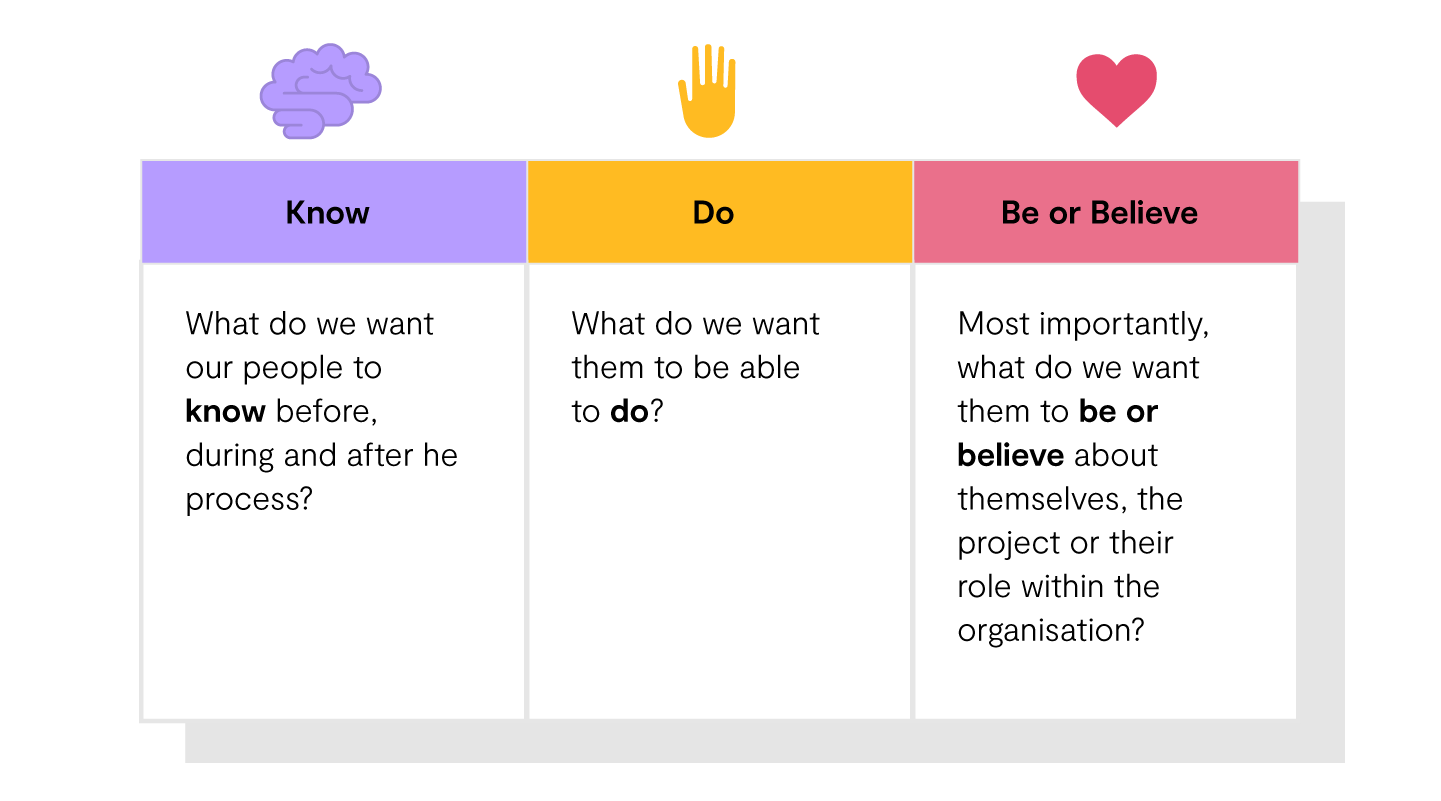
We’ve found that organisations have no trouble in identifying the know or the do, but it takes time to consider and identify the be(lieve), as that speaks to the heart of the matter and connects to the bigger why.
Change Management Performance
This includes the measurement of the change and transformation activities itself.
Even though this is useful, the focus should not be on this, but rather the organisational and individual performance.
For example, while measuring the learning participation and attendance numbers can be useful, greater emphasis should be placed on whether the kaimahi are engaging with the content and applying it (Individual performance) and whether it’s contributing to adherence to the timeline and project plan by providing your team with the knowledge, skills and attributes needed to progress (organisational performance).
It means little if all your people are completing the provided learning, but it’s not connecting with the heart of the matter and therefore they choose not to implement it.
It becomes a pointless compliance activity.
We’re in the business of creating better learning that is life changing and everything we do needs to connect with that bigger why.
In Summary
Change is inevitable.
Organisations (and more importantly, leaders within them) need to proactively prepare and lead through change.
By understanding the change process, considering its impact on your people, and effectively communicating the motivations behind change, you'll be able to foster a culture of agility and adaptability. With the right knowledge and approach, you'll be able to help your organisation successfully navigate change, overcome challenges, and thrive in an ever-evolving business landscape.
Embracing change is an opportunity for growth and progress, rather than a daunting obstacle.
If you'd like to help getting off on the right foot with your next change initiative, why not get in touch with one of our Learning Partners today!
About the author
I'm Frieda, lover dad jokes, fairy-tale endings and outdoor adventures with my family. For almost a decade I designed learning solutions for my Science and Biology high-school students. Now my audience includes a variety of learners from different skill levels and organisations. Since joining Inspire Group, every day has been a meaningful experience collaborating with the team and our clients to design learning that is life changing.







